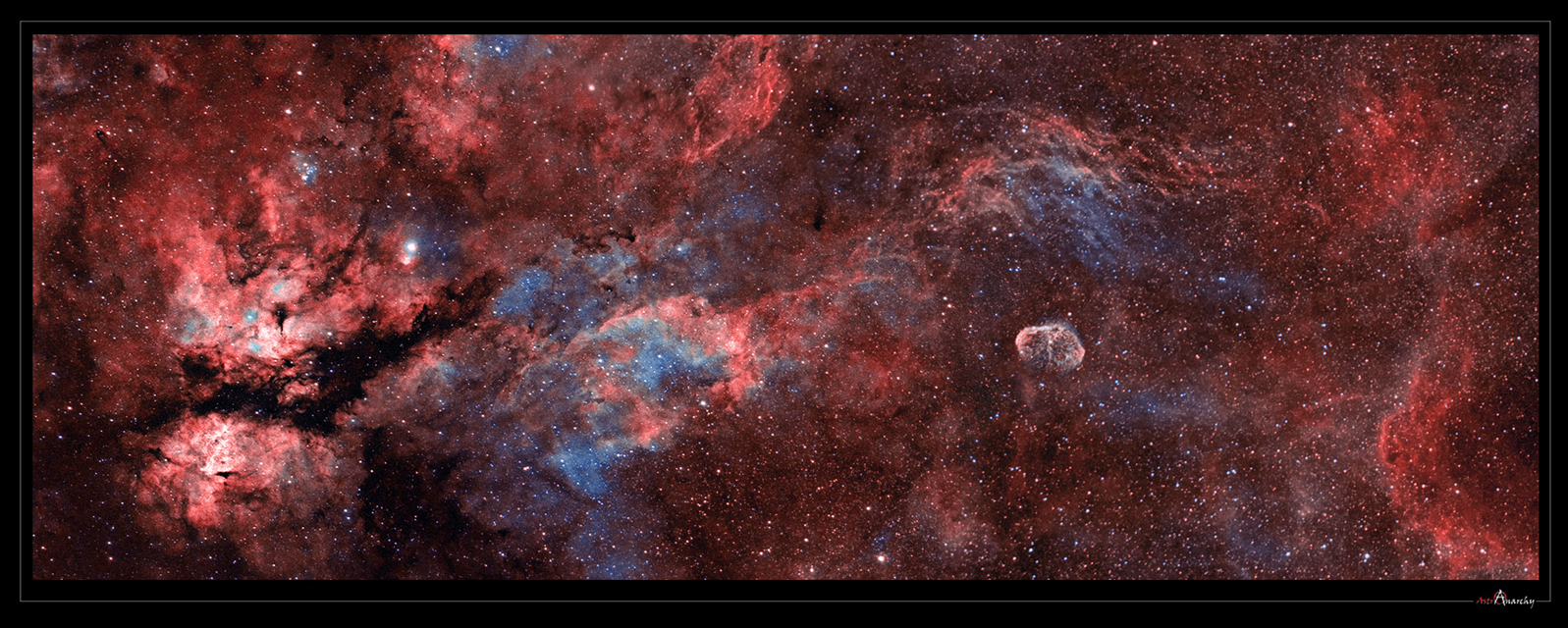While making scale studies from various objects, I did make some new panoramas from archived images.
I will publish some of them as an individual images, comments and suggestions are welcome.
Cygnus panorama
Image is in HST-palette from an emission of ionized elements, R=Sulfur, G=Hydrogen and B=Oxygen.
Note. Size of the full Moon is marked as a gray circle, at lower Right corner, for a scale.
There are two individual images used to make this panoramic image:
- Butterfly Nebula, http://astroanarchy.blogspot.com/2011/01/butterfly-nebula-reprocessed.html
- Crescent Nebula, http://astroanarchy.blogspot.com/2011/01/ngc-6888-crescent-nebula-wide-field.html
Natural color composition from the emission of ionized elements, R=80%Hydrogen+20%Sulfur, G=100%Oxygen and B=85%Oxygen+15%Hydrogen to compensate otherwise missing H-beta emission. Star colors are mixed from the NB channels, Red=H-a, G=O-III and B= 85%O-III + 15%H-a.This composition is very close to a visual spectrum.
There is a third overlapping image from the same area, the "Tulip Nebula". I have a panoramic image containing it as well. I like this panorama but it's so long, that image gets very small, so I didn't place it as a main image in this post.
A long and narrow version, with the "Tulip Nebula"
Tulip Nebula, the original image:
http://astroanarchy.blogspot.com/2011/01/tulip-nebula-sh2-101-wide-field-closeup.html
All images in this page have been part of an older mosaic, the "Cygnus Trio"
It was my very first APOD (Astronomy Picture Of Day) published by NASA.
http://astroanarchy.blogspot.com/2008/11/apod.html



0 comments:
Post a Comment